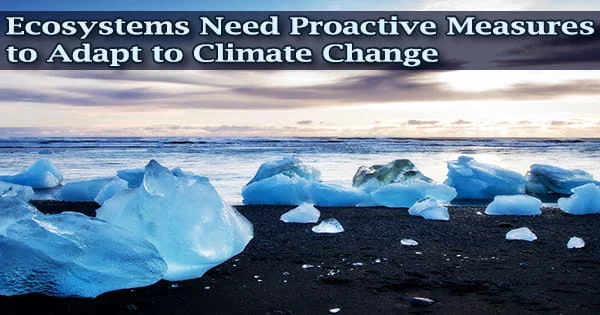According to research published today (June 23, 2022) in the journal Science, as the urgency of combating climate change increases, so does the requirement for proactive management of the planet’s fast-altering biosphere.
“There is actually a lot we can do to help systems cope with oncoming climate change,” says Simon Fraser University biology professor and author Jonathan Moore, who with University of Washington professor Daniel Schindler, reviewed and assessed the potential benefits of forward-looking approaches.
“From restoring connectivity to reducing local stressors to conserving future habitats all of these proactive approaches can help the ecosystems that we rely upon to adapt to climate change.”
Schindler points out that in light of this, it is essential to go beyond preservation-oriented techniques and incorporate those that promote ecological change in order for species and ecosystems to adapt and be resilient.
The diversity of possibilities for species and ecosystems in the future will be maintained by local initiatives to conserve biodiversity and regenerate habitat complexity.
While the biosphere’s adaptive response to a changing world has mostly depended on species dispersal into new habitats, climate change is also affecting those ecosystems, resulting in the extinction of some species and the emergence of new ones.
We often expect that ecosystems will always look the same, or that certain species will always be found in the same locations. The biosphere has never been static and we need to embrace management approaches that maintain a dynamic and fluid biosphere. Thus, conservation and management need to be prospective looking to the future, and proactive taking action for the future.
Professor Daniel Schindler
The authors point out that conservation efforts should include proactive management of new possibilities and pressures in addition to a focus on “climate change losers.” Warming oceans and melting sea ice in the Arctic may increase fish output, but they also pose a threat to some species, such as polar bears who hunt seals on the ice.
The disappearance of ice in the Arctic Ocean adds to the environmental dangers posed by economic activities like shipping and oil and gas exploration. To handle these stresses and protect the Arctic ecosystem in the long term, a forward-thinking strategy is required.
The biodiversity of the Earth has a history of change, with genes, species, populations, and ecosystems all undergoing constant change in tandem with a changing environment.
“Earth’s systems have an incredible capacity to adapt and be resilient to changes,” says Moore. “That is what has allowed some species to persist for millions of years. But our actions are seriously undermining that adaptive capacity.”
The authors warn that even with the most aggressive plans for reducing emissions, more warming will “persist for decades” before possibly reversing and that strategies to promote adaptation and resilience will be essential for preserving biodiversity and maintaining healthy ecosystems.
“Natural resource management and conservation efforts will need to embrace the dynamic aspects of the biosphere to help maintain functioning ecosystems and protect biodiversity amid ongoing climate change,” says Moore.
Since the globe is warming and systems are changing, Schindler argues that it is crucial and urgent for humanity to minimize greenhouse gas emissions.
“We often expect that ecosystems will always look the same, or that certain species will always be found in the same locations. The biosphere has never been static and we need to embrace management approaches that maintain a dynamic and fluid biosphere. Thus, conservation and management need to be prospective looking to the future, and proactive taking action for the future.”





